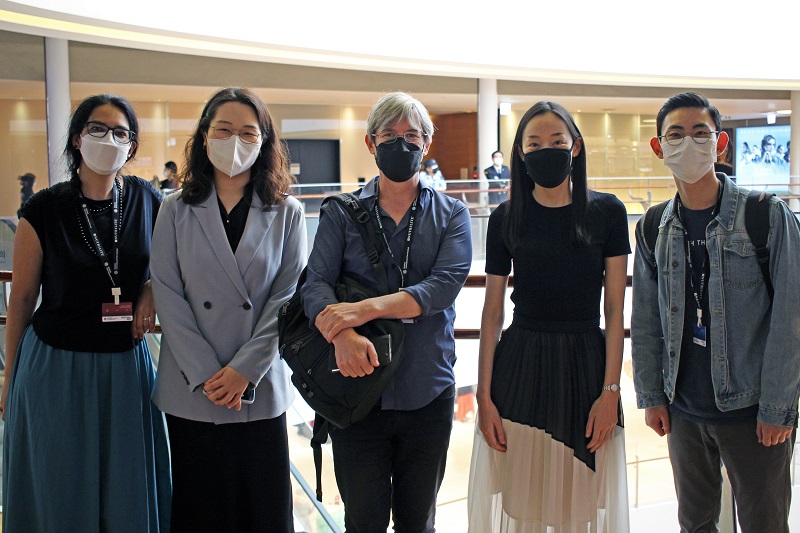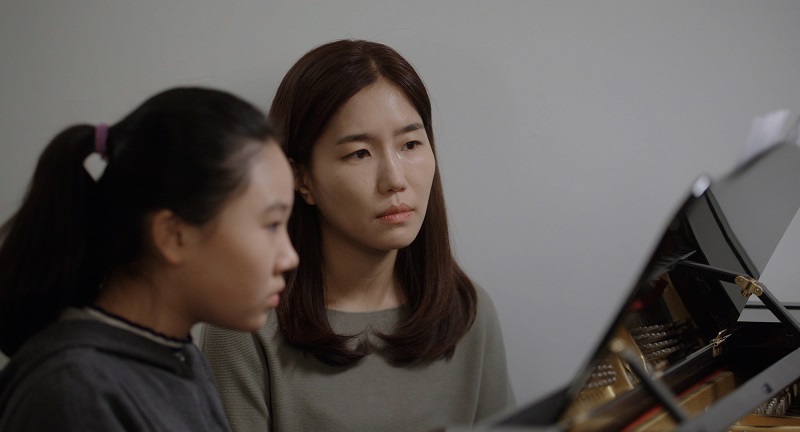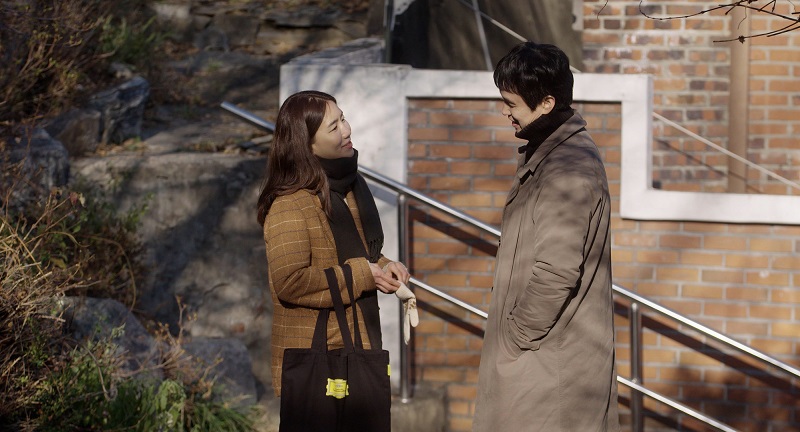- 한국어
- English
- 日本語
- 中文
- العربية
- Español
- Français
- Deutsch
- Pусский
- Tiếng Việt
- Indonesian
By Honorary Reporter Bojana Doneva from Bulgaria
Photos = Kim Tae-young

Darcy Paquet (center), American film critic and lecturer at the LTI Korea Translation Academy, and his students including the producer of "A Winter Glove," Kim Tae-young (far right).
The media translation course of the Literature Translation Institute (LTI) of Korea's Translation Academy offers hands-on experience in translating subtitles for films as well as webtoons (online comics). Founded in 2008, the academy trains students to be professional translators specifically for Korean cinema and literature.
Kim Tae-young is the co-screenwriter and producer of the short film "A Winter Glove." This year, he worked on the English-language translation of his work and the Korean indie film "Not One and Not Two," both of which were invited to compete at the Busan International Film Festival, which ran from Oct. 6-15.
The following are excerpts from an interview with Kim.

The protagonist in "A Winter Glove" is In-gyeong, a piano teacher who begins studying Japanese for the sake of her boyfriend.
When and how did you first learn about the institute?
In February this year, my wife showed me an LTI post on seeking applicants for the course and thought I should try it. Back then, I had little experience in translating but thought it could be a good opportunity and challenge.
How did you get the translation job for "Not One and Not Two" and "A Winter Glove?"
My classmates and I were introduced to "Not One and Not Two" by our teacher, Darcy Paquet. After we translated two other shorts, he asked us how we'd feel about translating a feature film for a change. We received the dialogue list and did the spotting and the Korean-to-English translation.
Later, I learned during the LTI course the importance of having a different perspective and choosing from as many options as possible. So for "A Winter Glove," I thought I could greatly benefit by working with my colleagues. I did the first and second drafts of the translation and made revisions with them.
How long did it take to translate "Not One and Not Two" into English?
We had about three class periods dedicated to this project. Plus, my classmates and I held Zoom meetings on weekends to work on it because it felt like the project was never going to end.
What about your short "A Winter Glove?"
It took me close to two months from making a dialogue list and spotting to finalizing everything -- the font, color and size of the subtitles -- on Premiere Pro.

In "A Winter Glove," In-gyeong starts learning Japanese after her boyfriend decides to move to Japan for work.
What makes for good English-language translation and subtitles?
I think one of the most important qualities is conciseness, and this makes translation in cinema especially difficult. A big challenge for me is conveying a speaker's tone and message -- no matter how complicated -- in a fairly simple sentence that could be read over two to three seconds.
How do good translation and subtitling affect the audience's viewing experience?
It impacts the viewing experience in every way possible. A good translation cannot salvage a bad film, but if a movie is good enough, a good translation can help find the right audience and thrive regardless of cultural differences.
What traits should a subtitle translator have?
Translation is a craft as well as an art. Apart from talent, I believe high attention to detail and persistence are needed.
What do you feel are the benefits of the academy's media translation course?
I consider it a privilege to learn with people as committed to and passionate about translation as I am and to learn from faculty with only great knowledge and experience in this field, but also huge dedication in passing them down to students.
kalhong617@korea.net
*This article is written by a Korea.net Honorary Reporter. Our group of Honorary Reporters are from all around the world, and they share with Korea.net their love and passion for all things Korean.